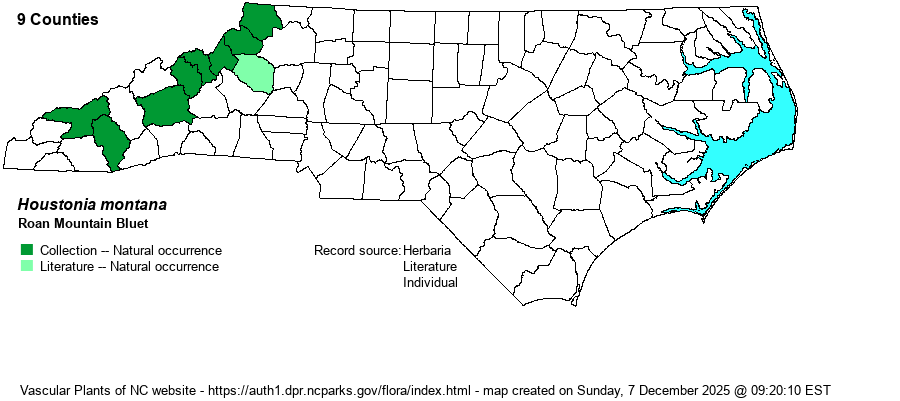| Author | Small | |
| Distribution | Limited to high elevations, ranging south to Swain and Jackson counties.
This is a Southern Appalachian endemic, found only in southwestern VA, western NC, and adjacent eastern TN. Most sites are somewhat close to the TN state line, especially on Roan and Grandfather mountains. | |
| Abundance | In suitable high elevation rocky summits, it can be locally fairly common, but it is rare overall in this region of the northern Mountains. It is a Federal and State Endangered species, even though NatureServe only considers it as a variety of H. purpurea. | |
| Habitat | This species has a restricted habitat -- high elevation (mostly over 4000 feet) crevices of rocky summits, or on grassy balds near outcrops at the summit. |
| Phenology | Blooms in June and July, and fruits from July to August. | |
| Identification | This species is very similar to H. purpurea, and often considered as a variety of it. However, in this rare species, the flowers are lavender-purple to rosy-purple, as opposed to white or lavender-white, and somewhat larger than those of that common species. (No, the flowers are simply not "purple" or "deep purple" as some references state.) Also, the rare species has a glabrous stem between leaf nodes, whereas in H. purpurea, the stem nodes are pubescent. See Weakley (2018) for a few additional, small characters. Be aware that H. purpurea is a quite common and widespread species and could occur in somewhat close proximity. But, normally when in bloom, you'll know H. montana when you see it! | |
| Taxonomic Comments | Some references treat this as a good species, as does Weakley (2018), but many also as a variety -- H. purpurea var. montana.
| |
| Other Common Name(s) | None | |
| State Rank | S2 | |
| Global Rank | G5T2 [G2] | |
| State Status | E | |
| US Status | LE | |
| USACE-agcp | | |
| USACE-emp | | |

